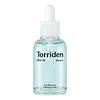What's inside
What's inside
 Key Ingredients
Key Ingredients

 Benefits
Benefits

 Concerns
Concerns

 Ingredients Side-by-side
Ingredients Side-by-side

Water
Skin ConditioningCaprylic/Capric Triglyceride
MaskingButylene Glycol
HumectantMethyl Trimethicone
Skin ConditioningNiacinamide
SmoothingGlycerin
HumectantBakuchiol
AntimicrobialPanthenol
Skin ConditioningPropanediol
SolventLauryl Glucoside
CleansingPolyacrylate Crosspolymer-6
Emulsion StabilisingPolyglyceryl-6 Laurate
EmulsifyingHydroxyethyl Acrylate/Sodium Acryloyldimethyl Taurate Copolymer
Emulsion StabilisingMyristyl Glucoside
CleansingCaprylyl Glycol
EmollientPotassium Cetyl Phosphate
EmulsifyingEthylhexylglycerin
Skin ConditioningAdenosine
Skin ConditioningParfum
Masking1,2-Hexanediol
Skin ConditioningSorbitan Isostearate
EmulsifyingMalt Extract
Skin ProtectingCopper Tripeptide-1
Skin ConditioningPalmitoyl Tripeptide-1
Skin ConditioningPerilla Ocymoides Leaf Extract
TonicEucalyptus Globulus Leaf Extract
PerfumingHydrogenated Lecithin
EmulsifyingSodium Guaiazulene Sulfonate
Arginine
MaskingSodium Surfactin
CleansingDisodium EDTA
Sodium Polyacryloyldimethyl Taurate
Emulsion StabilisingFerulic Acid
AntimicrobialGlutathione
Glycine
BufferingSerine
MaskingAspartic Acid
MaskingGlutamic Acid
HumectantLeucine
Skin ConditioningAlanine
MaskingLysine
Skin ConditioningProline
Skin ConditioningPhenylalanine
MaskingThreonine
Valine
MaskingIsoleucine
Skin ConditioningTyrosine
MaskingHistidine
HumectantCysteine
AntioxidantMethionine
Skin ConditioningWater, Caprylic/Capric Triglyceride, Butylene Glycol, Methyl Trimethicone, Niacinamide, Glycerin, Bakuchiol, Panthenol, Propanediol, Lauryl Glucoside, Polyacrylate Crosspolymer-6, Polyglyceryl-6 Laurate, Hydroxyethyl Acrylate/Sodium Acryloyldimethyl Taurate Copolymer, Myristyl Glucoside, Caprylyl Glycol, Potassium Cetyl Phosphate, Ethylhexylglycerin, Adenosine, Parfum, 1,2-Hexanediol, Sorbitan Isostearate, Malt Extract, Copper Tripeptide-1, Palmitoyl Tripeptide-1, Perilla Ocymoides Leaf Extract, Eucalyptus Globulus Leaf Extract, Hydrogenated Lecithin, Sodium Guaiazulene Sulfonate, Arginine, Sodium Surfactin, Disodium EDTA, Sodium Polyacryloyldimethyl Taurate, Ferulic Acid, Glutathione, Glycine, Serine, Aspartic Acid, Glutamic Acid, Leucine, Alanine, Lysine, Proline, Phenylalanine, Threonine, Valine, Isoleucine, Tyrosine, Histidine, Cysteine, Methionine
Water
Skin ConditioningButylene Glycol
HumectantGlycerin
HumectantDipropylene Glycol
Humectant1,2-Hexanediol
Skin ConditioningPanthenol
Skin ConditioningSodium Hyaluronate
HumectantHydrolyzed Hyaluronic Acid
HumectantSodium Acetylated Hyaluronate
HumectantSodium Hyaluronate Crosspolymer
HumectantHydrolyzed Sodium Hyaluronate
Skin ConditioningAllantoin
Skin ConditioningTrehalose
HumectantBetaine
HumectantPropanediol
SolventPortulaca Oleracea Extract
Skin ConditioningHamamelis Virginiana Extract
AntiseborrhoeicMadecassoside
AntioxidantMadecassic Acid
Skin ConditioningCeramide NP
Skin ConditioningBeta-Glucan
Skin ConditioningMalachite Extract
AntioxidantCholesterol
EmollientPentylene Glycol
Skin ConditioningGlyceryl Acrylate/Acrylic Acid Copolymer
HumectantPvm/Ma Copolymer
Emulsion StabilisingPolyglyceryl-10 Laurate
Skin ConditioningXanthan Gum
EmulsifyingTromethamine
BufferingCarbomer
Emulsion StabilisingEthylhexylglycerin
Skin ConditioningScutellaria Baicalensis Root Extract
AstringentPaeonia Suffruticosa Root Extract
Skin ProtectingWater, Butylene Glycol, Glycerin, Dipropylene Glycol, 1,2-Hexanediol, Panthenol, Sodium Hyaluronate, Hydrolyzed Hyaluronic Acid, Sodium Acetylated Hyaluronate, Sodium Hyaluronate Crosspolymer, Hydrolyzed Sodium Hyaluronate, Allantoin, Trehalose, Betaine, Propanediol, Portulaca Oleracea Extract, Hamamelis Virginiana Extract, Madecassoside, Madecassic Acid, Ceramide NP, Beta-Glucan, Malachite Extract, Cholesterol, Pentylene Glycol, Glyceryl Acrylate/Acrylic Acid Copolymer, Pvm/Ma Copolymer, Polyglyceryl-10 Laurate, Xanthan Gum, Tromethamine, Carbomer, Ethylhexylglycerin, Scutellaria Baicalensis Root Extract, Paeonia Suffruticosa Root Extract
 Reviews
Reviews

Ingredients Explained
These ingredients are found in both products.
Ingredients higher up in an ingredient list are typically present in a larger amount.
1,2-Hexanediol is a synthetic liquid and another multi-functional powerhouse.
It is a:
- Humectant, drawing moisture into the skin
- Emollient, helping to soften skin
- Solvent, dispersing and stabilizing formulas
- Preservative booster, enhancing the antimicrobial activity of other preservatives
Butylene Glycol (or BG) is used within cosmetic products for a few different reasons:
Overall, Butylene Glycol is a safe and well-rounded ingredient that works well with other ingredients.
Though this ingredient works well with most skin types, some people with sensitive skin may experience a reaction such as allergic rashes, closed comedones, or itchiness.
Learn more about Butylene GlycolEthylhexylglycerin (we can't pronounce this either) is commonly used as a preservative and skin softener. It is derived from glyceryl.
You might see Ethylhexylglycerin often paired with other preservatives such as phenoxyethanol. Ethylhexylglycerin has been found to increase the effectiveness of these other preservatives.
Glycerin is already naturally found in your skin. It helps moisturize and protect your skin.
A study from 2016 found glycerin to be more effective as a humectant than AHAs and hyaluronic acid.
As a humectant, it helps the skin stay hydrated by pulling moisture to your skin. The low molecular weight of glycerin allows it to pull moisture into the deeper layers of your skin.
Hydrated skin improves your skin barrier; Your skin barrier helps protect against irritants and bacteria.
Glycerin has also been found to have antimicrobial and antiviral properties. Due to these properties, glycerin is often used in wound and burn treatments.
In cosmetics, glycerin is usually derived from plants such as soybean or palm. However, it can also be sourced from animals, such as tallow or animal fat.
This ingredient is organic, colorless, odorless, and non-toxic.
Glycerin is the name for this ingredient in American English. British English uses Glycerol/Glycerine.
Learn more about GlycerinPanthenol is a common ingredient that helps hydrate and soothe the skin. It is found naturally in our skin and hair.
There are two forms of panthenol: D and L.
D-panthenol is also known as dexpanthenol. Most cosmetics use dexpanthenol or a mixture of D and L-panthenol.
Panthenol is famous due to its ability to go deeper into the skin's layers. Using this ingredient has numerous pros (and no cons):
Like hyaluronic acid, panthenol is a humectant. Humectants are able to bind and hold large amounts of water to keep skin hydrated.
This ingredient works well for wound healing. It works by increasing tissue in the wound and helps close open wounds.
Once oxidized, panthenol converts to pantothenic acid. Panthothenic acid is found in all living cells.
This ingredient is also referred to as pro-vitamin B5.
Learn more about PanthenolPropanediol is an all-star ingredient. It softens, hydrates, and smooths the skin.
It’s often used to:
Propanediol is not likely to cause sensitivity and considered safe to use. It is derived from corn or petroleum with a clear color and no scent.
Learn more about PropanediolWater. It's the most common cosmetic ingredient of all. You'll usually see it at the top of ingredient lists, meaning that it makes up the largest part of the product.
So why is it so popular? Water most often acts as a solvent - this means that it helps dissolve other ingredients into the formulation.
You'll also recognize water as that liquid we all need to stay alive. If you see this, drink a glass of water. Stay hydrated!
Learn more about Water